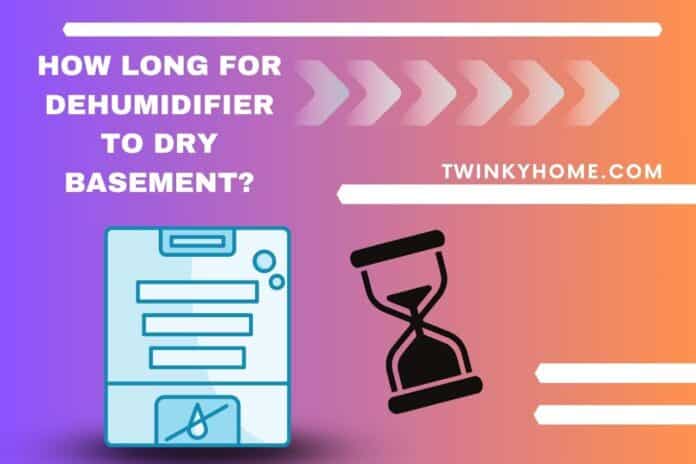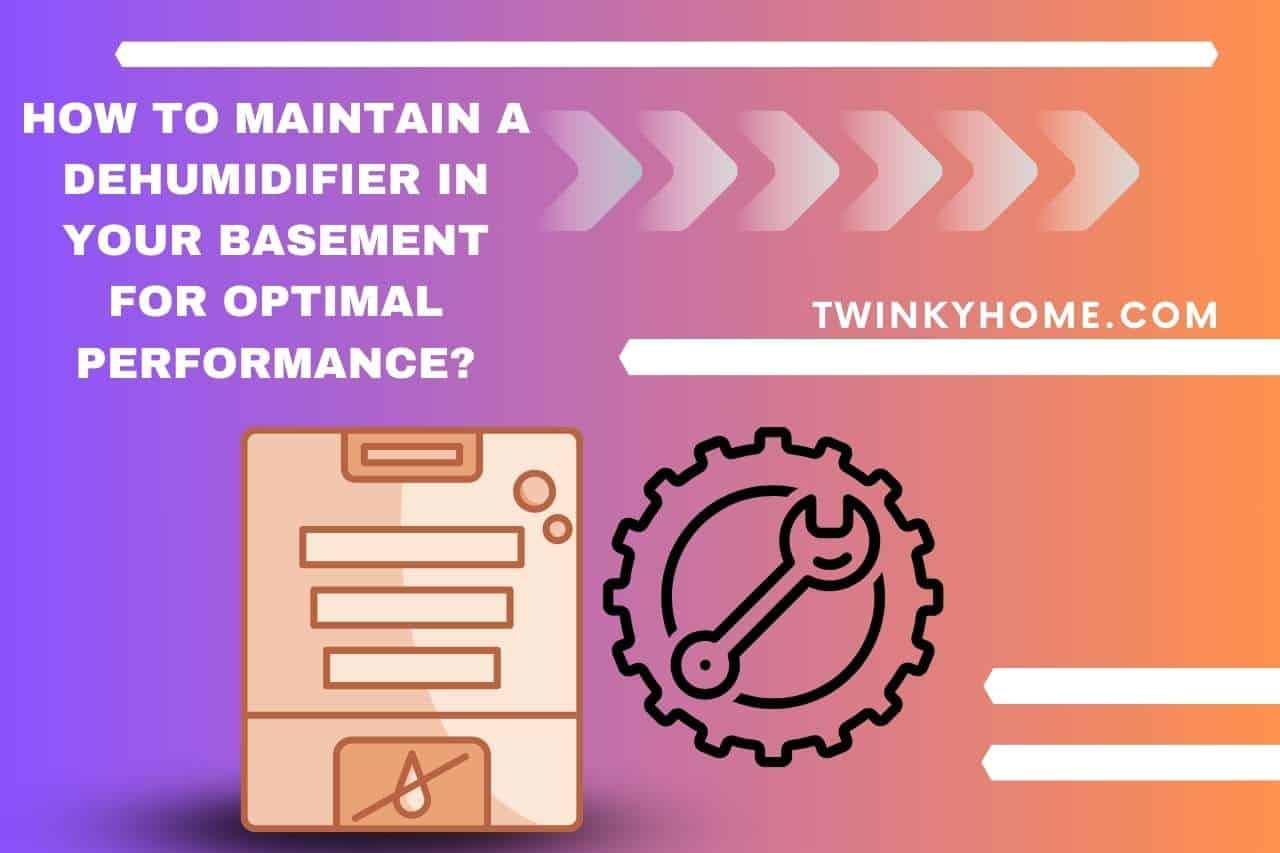How long for dehumidifier to dry the basement: You might be curious about the timeline for achieving a dry basement with your dehumidifier. The duration for a dehumidifier to effectively dry a basement isn’t one-size-fits-all and depends on various factors, as the condition of basements and the performance of each dehumidifier vary. In this guide, we will be discussing the elements influencing the drying process, offering insights into what affects the timeframe. Whether you’re dealing with minor dampness or more significant moisture challenges, understanding these factors can help set realistic expectations. So, stay tuned to discover the key considerations, optimize your dehumidifier usage, and transform your basement into a comfortably dry space!
Do you Need a Dehumidifier for your Basement?
Yes, you might need a dehumidifier for your basement. The reason why, basements are prone to excess moisture, making they are susceptible to issues like mold growth, musty odors, and structural damage. Then, a dehumidifier acts as a proactive solution, extracting excess humidity from the air and preventing these problems. Check the following points that describe the necessity of dehumidifiers briefly.
- Prevent Mold Growth: Reduces excess moisture, a key factor in mold development.
- Protect Health: Damp environments can trigger respiratory issues and allergies, especially due to black bold.
- Preserve Belongings: Guards furniture, clothing, and electronics from moisture-related damage.
- Enhance Home Comfort: Maintains an optimal humidity level for a more pleasant living space.
- Prevent Musty Odors: Controls dampness and prevents the unpleasant smell associated with high humidity.
- Avoid Structural Damage: Excessive moisture can compromise the structural integrity of the basement due to the absence of a dehumidifier.
- Overall Livability: Contributes to a dry, comfortable, and healthier living environment in your home.
How Long for Dehumidifier to Dry Basement?
A dehumidifier can take 24 to 72 hours to dry a basement completely. However, the duration depends on various factors, such as the size of the basement, the severity of moisture issues, and the dehumidifier’s capacity.
In general, it may take anywhere from 24 hours to several days to achieve optimal dryness.
For minor dampness, a well-sized dehumidifier can make a noticeable difference within a day. However, for more severe moisture problems, it might take several days of continuous operation.
In general, it is recommended to run a dehumidifier in a basement for around 12 hours to keep the moisture level balanced. But after flooding, the dehumidifier needs to be run for at least two days without a pause.
Regular monitoring and adjustments to the dehumidifier settings can optimize drying time. It’s essential to be patient, allowing the dehumidifier sufficient time to effectively extract moisture and create a dry, comfortable basement environment.
What Factors Determine the Drying Time of a Dehumidifier?
The drying time of a dehumidifier is determined by several key factors, such as the dehumidifier’s capacity, basement size, and so on. Let us explain each determinant to you.
- Basement Size and Severity of Moisture Issues: Larger basements or those with more significant moisture problems may require a longer drying time.
- Dehumidifier Capacity: The capacity of the dehumidifier plays a crucial role. Higher-capacity units can extract more moisture per day, potentially reducing drying time and vice versa.
- Ventilation: Proper ventilation expedites the drying process. Good airflow helps the dehumidifier circulate dry air effectively.
- Temperature: Dehumidifiers may take longer in cooler temperatures. On the other hand, warmer environments enhance the unit’s efficiency, speeding up the drying time.
- Humidity Levels: Initial humidity levels in the basement impact drying time. Undoubtedly, extremely high humidity requires more time for the dehumidifier to reach the desired level.
- Consistency of Operation: Continuous operation ensures a steady reduction in humidity. Consistent use, especially during high humidity periods, accelerates the drying process.
- Adjustments and Monitoring: Regularly monitor humidity levels and adjust the dehumidifier settings as needed. Fine-tuning the settings according to your specific model can optimize drying efficiency.
- Quality of Seals and Insulation: Well-sealed and insulated basements retain dry air better, contributing to quicker drying times.
How to Maintain a Dehumidifier in your Basement for Optimal Performance?
The dehumidifier in your basement needs periodical maintenance for optimal performance and longevity. Here, we have gathered all the practices that should be included in your maintenance routine.
- Regular Cleaning: A clean unit operates more efficiently. Therefore, clean the air intake and exhaust grills, as well as the evaporator and condenser coils, at regular intervals to prevent dust and debris buildup.
- Empty the Water Collection Bucket: If your dehumidifier uses a collection bucket, empty it at least once a week to prevent overflow. Some units have auto-shutoff features when the bucket is full.
- Check and Clean the Filter: Clean or replace the filter according to the manufacturer’s recommendations because a clogged filter reduces airflow and hampers dehumidification.
- Inspect Drainage System: If using continuous drainage, ensure the hose is unobstructed and directs water to an appropriate outlet. Check for leaks or clogs and repair the equipment as early as possible.
- Monitor Humidity Levels: Use a hygrometer to monitor basement humidity. Adjust the dehumidifier settings accordingly to maintain the desired levels.
- Positioning: Ensure the dehumidifier is positioned correctly for optimal airflow. Keep it away from walls and obstacles to facilitate efficient operation.
- Annual Professional Inspection: Consider an annual inspection by a professional to address any internal issues, ensuring long-term reliability.
You May Also Like
- How to Drain a Basement Dehumidifier? Step-by-Step Guide
- How to Clean Basement Dehumidifier? Crystal Clear Air!
- How to Keep the Basement Dry Without a Dehumidifier? (Tips & Tricks)
- Does Dehumidifier in Basement Help Upstairs? The Ripple Effect!
- Whole House Dehumidifier vs Basement Dehumidifier – Choosing Wisely!
- How to Choose the Right Dehumidifier for the Basement? Basement Bliss!
- Why does My Basement Dehumidifier Ice Up? Decoding Dehumidifier Woes!
- Can you Run Two Dehumidifiers in the Basement? (Ins and Outs)
- How Long Should a Basement Dehumidifier Last? Investing in Comfort!








![OGX Biotin And Collagen Shampoo Review [Updated One] Ogx Biotin And Collagen Shampoo Review](https://twinkyhome.com/wp-content/uploads/2022/03/Are-chicken-Super-Noodles-vegetarian-1-100x70.jpg)